Showing Spotlights 553 - 560 of 2879 in category All (newest first):
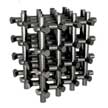 The concept of nanostructuring of battery electrodes is not new; it has been frequently employed to improve the charging speed and, in some cases, stability of Li-ion electrodes. Researchers now demonstrated 3D-interconnected Ni nanowire meshes as current collectors and structural scaffolds for building nanostructured Li-ion electrodes. This material exhibits a semi-ordered structure and is characterized by some of the highest combined porosity and surface-to-volume ratio among macroporous metals.
The concept of nanostructuring of battery electrodes is not new; it has been frequently employed to improve the charging speed and, in some cases, stability of Li-ion electrodes. Researchers now demonstrated 3D-interconnected Ni nanowire meshes as current collectors and structural scaffolds for building nanostructured Li-ion electrodes. This material exhibits a semi-ordered structure and is characterized by some of the highest combined porosity and surface-to-volume ratio among macroporous metals.
Jul 6th, 2020
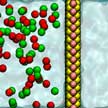 Researchers show that a nanoporous MoS2 membrane allows a higher water flux compared with other 2D materials such as graphene, boron nitride and phosphorene. The team dug deeply into the physical reasons behind why MoS2 performed better than other two-dimensional materials in water desalination processes. Through molecular dynamics simulation, they found out that water density near a MoS2 membrane is lower compared to that near other materials, which indicates that water molecules were more likely to transport through the membrane instead of accumulating around it.
Researchers show that a nanoporous MoS2 membrane allows a higher water flux compared with other 2D materials such as graphene, boron nitride and phosphorene. The team dug deeply into the physical reasons behind why MoS2 performed better than other two-dimensional materials in water desalination processes. Through molecular dynamics simulation, they found out that water density near a MoS2 membrane is lower compared to that near other materials, which indicates that water molecules were more likely to transport through the membrane instead of accumulating around it.
Jul 3rd, 2020
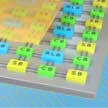 Novel complementary nanoelectromechanical (CNEM) switches based on complementary ferroelectric nanocracks integrate the advantages of ferroelectric and nanoelectromechanical switches, such as nonvolatility, quasi-zero OFF-state leakage current and low operating voltage. These ferroelectric crack-based CNEM switches could realize energy-efficient and high-density reconfigurable computing, which can be specialized to a particular task through its universal programmability, offering large flexibility and short time from design to realization.
Novel complementary nanoelectromechanical (CNEM) switches based on complementary ferroelectric nanocracks integrate the advantages of ferroelectric and nanoelectromechanical switches, such as nonvolatility, quasi-zero OFF-state leakage current and low operating voltage. These ferroelectric crack-based CNEM switches could realize energy-efficient and high-density reconfigurable computing, which can be specialized to a particular task through its universal programmability, offering large flexibility and short time from design to realization.
Jun 29th, 2020
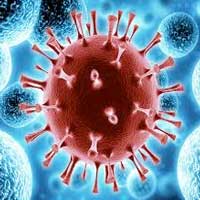 The only options to control and deal with the spread of the Severe Acute Respiratory Syndrome Virus 2 (SARS-CoV-2) are fast, cheap, reliable, and portable means of diagnosing COVID-19 infection (the name of disease caused by SARS-CoV-2); therapeutics to treat the infected; and vaccines to rapidly build up immunization of large parts of the global population. The current crisis demands an urgent analysis of all the available nanotechnology tools. While nanomedicine strategies are in use for the design of the vaccine carriers, there are not enough other nanotechnology approaches being explored to tackle the current outbreak.
The only options to control and deal with the spread of the Severe Acute Respiratory Syndrome Virus 2 (SARS-CoV-2) are fast, cheap, reliable, and portable means of diagnosing COVID-19 infection (the name of disease caused by SARS-CoV-2); therapeutics to treat the infected; and vaccines to rapidly build up immunization of large parts of the global population. The current crisis demands an urgent analysis of all the available nanotechnology tools. While nanomedicine strategies are in use for the design of the vaccine carriers, there are not enough other nanotechnology approaches being explored to tackle the current outbreak.
Jun 26th, 2020
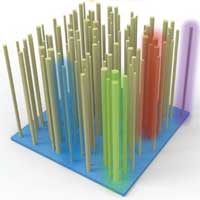 Vertical semiconductor nanowire arrays are a promising material for retinal prostheses, which could help restore the eyesight of people suffering from severe retinal diseases. These nanowires could also be used to fabricate bio-inspired photoreceptors and lightweight, highly efficient photovoltaics. In new work, scientists present theoretical and experimental studies on the microscopic optical behavior of highly dense and randomly distributed nanowire arrays embedded in a transparent polymer.
Vertical semiconductor nanowire arrays are a promising material for retinal prostheses, which could help restore the eyesight of people suffering from severe retinal diseases. These nanowires could also be used to fabricate bio-inspired photoreceptors and lightweight, highly efficient photovoltaics. In new work, scientists present theoretical and experimental studies on the microscopic optical behavior of highly dense and randomly distributed nanowire arrays embedded in a transparent polymer.
Jun 18th, 2020
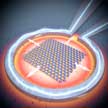 The electronic and optical properties of 2D materials can be controlled by mechanical deformations of their crystal structure. This route to tailor the properties of materials is called strain engineering and it is a rapidly evolving field of research in nanomaterials. Straintronics, however, is somewhat hampered by technical issues related to the fast and reliable control of the applied strain. Researchers have now developed a versatile and straightforward platform to control the biaxial strain in atomically thin layers.
The electronic and optical properties of 2D materials can be controlled by mechanical deformations of their crystal structure. This route to tailor the properties of materials is called strain engineering and it is a rapidly evolving field of research in nanomaterials. Straintronics, however, is somewhat hampered by technical issues related to the fast and reliable control of the applied strain. Researchers have now developed a versatile and straightforward platform to control the biaxial strain in atomically thin layers.
Jun 17th, 2020
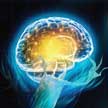 Many biological systems transmit signals via ions or molecules, whereas man-made sensors are mainly based on electron transport systems, i.e. electronics. The concept of ionic sensory systems is inspired by ion transport in biological systems, which is the movement of ions across a membrane, passively through ion channels or actively through ion pumps. Although sensory systems based on accurate ion transport are still in their early development, recent progress in nano-ionic sensory systems underlines their significant potential.
Many biological systems transmit signals via ions or molecules, whereas man-made sensors are mainly based on electron transport systems, i.e. electronics. The concept of ionic sensory systems is inspired by ion transport in biological systems, which is the movement of ions across a membrane, passively through ion channels or actively through ion pumps. Although sensory systems based on accurate ion transport are still in their early development, recent progress in nano-ionic sensory systems underlines their significant potential.
Jun 16th, 2020
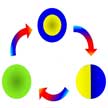 Bismuth antimonide (BiSb) is an important material in nanoelectronics as a topological insulator and as a thermoelectric material. However, some of its thermal properties are still mostly unknown at the nanoscale. This is an issue because in order for BiSb to exhibit its thermoelectric properties it has to be an alloy. But at the nanoscale, it is difficult to mix Bi and Sb. New findings provide the phase diagram of bismuth antimonide at nanoscale sizes for different types of morphologies like sphere, rod, wire, and film, thereby filling the knowledge gap about the thermal properties of BiSb at the nanoscale.
Bismuth antimonide (BiSb) is an important material in nanoelectronics as a topological insulator and as a thermoelectric material. However, some of its thermal properties are still mostly unknown at the nanoscale. This is an issue because in order for BiSb to exhibit its thermoelectric properties it has to be an alloy. But at the nanoscale, it is difficult to mix Bi and Sb. New findings provide the phase diagram of bismuth antimonide at nanoscale sizes for different types of morphologies like sphere, rod, wire, and film, thereby filling the knowledge gap about the thermal properties of BiSb at the nanoscale.
Jun 5th, 2020
 The concept of nanostructuring of battery electrodes is not new; it has been frequently employed to improve the charging speed and, in some cases, stability of Li-ion electrodes. Researchers now demonstrated 3D-interconnected Ni nanowire meshes as current collectors and structural scaffolds for building nanostructured Li-ion electrodes. This material exhibits a semi-ordered structure and is characterized by some of the highest combined porosity and surface-to-volume ratio among macroporous metals.
The concept of nanostructuring of battery electrodes is not new; it has been frequently employed to improve the charging speed and, in some cases, stability of Li-ion electrodes. Researchers now demonstrated 3D-interconnected Ni nanowire meshes as current collectors and structural scaffolds for building nanostructured Li-ion electrodes. This material exhibits a semi-ordered structure and is characterized by some of the highest combined porosity and surface-to-volume ratio among macroporous metals. 
 Subscribe to our Nanotechnology Spotlight feed
Subscribe to our Nanotechnology Spotlight feed





